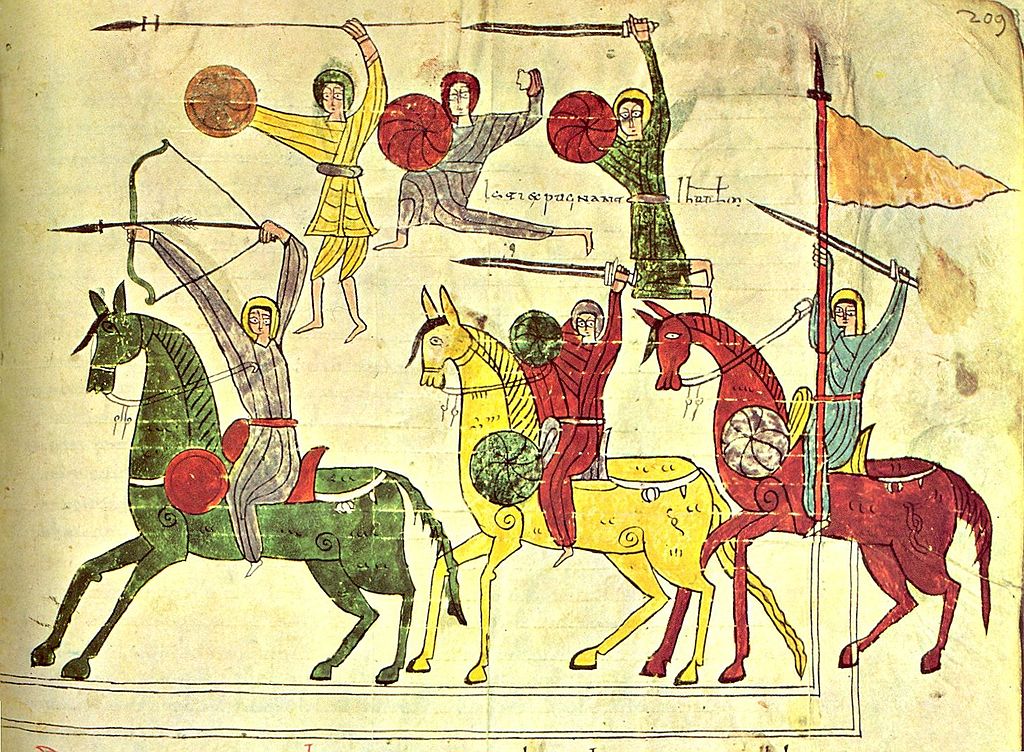Amazon Audible Gift Memberships

Try Amazon Audible Premium Plus and Get Up to Two Free Audiobooks
The Urgell Beatus Codex
Commentary on the Apocalypse by Beatus of Liébana, Spain, c.975AD
Musei Diocesá de La Seu d'Urgell
Nebuchadnezzar's Army Besieging Jerusalem

A larger image of Nebuchadnezzar's Army Besieging Jerusalem, Urgell Beatus Codex, Beatus of Liébana, Spain.
A SEVENTH-CENTURY SPANISH VERSION OF THE TAKING OF JERUSALEM BY NEBUCHADREZZAR
Museu Diocesa d’Urgell, La Seu d’Urgell, Spain
In this tenth-century Spanish manuscript illumination portraying the Biblical capture of Jerusalem by Nebuchadrezzar, several soldiers on both sides of the conflict are displayed.
All are armed in the same way.
This is different from most medieval depictions of similar Biblical accounts, which usually show the Israelites as Christians and the Babylonians as Muslims.
There is no visible body armor on the soldiers, although it may be hidden under their clothes.
All but the archers carry small, round shields, known as bucklers.
The soldiers carry three weapons: a long spear, with a distinct spearhead, only wielded by the infantry; swords, used by infantry, cavalry, and as an executioner’s weapon,
that are longer than other contemporary swords; and bows, fired by the besiegers from horseback and by the besieged from the walls of the distinctly Muslim fortification—probably an attempt by the artist to display a fortified Middle Eastern town.
The very odd style of horse archery should not be taken as literal, however; instead, it probably shows the inadequacy of an artist attempting to paint a three-dimensional action before the use of perspective.
While wielding a sword one cavalry soldier also carries a banner, holding it with the same hand he uses to hold the reins of his horse.
Unfortunately, the size of the illumination prohibits one to determine any details of the weapons.
Source: p.246, Medieval Weapons: An Illustrated History of Their Impact by Kelly DeVries & Robert D. Smith (2007)
Other copies of Commentary on the Apocalypse by Beatus of Liébana

